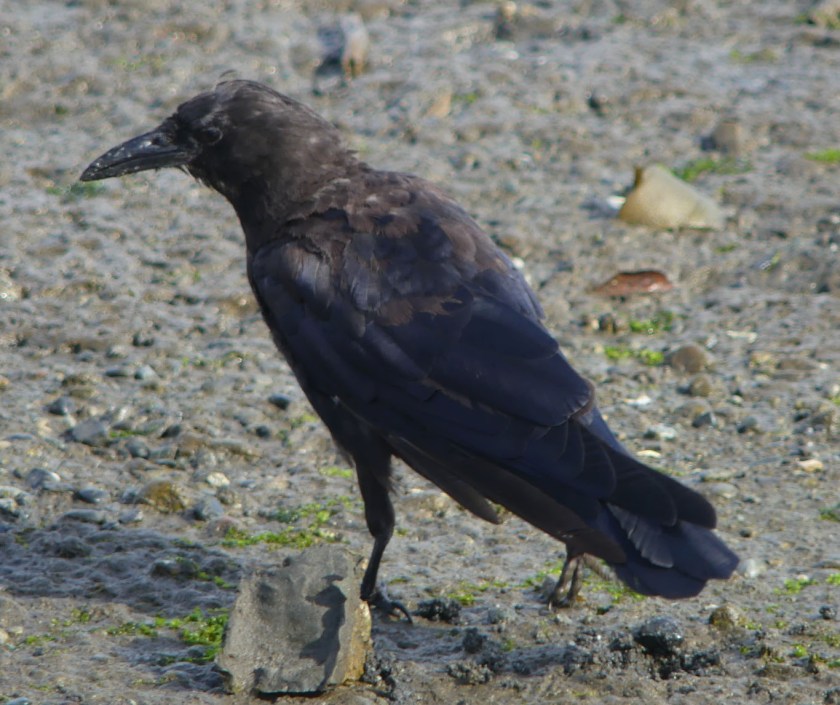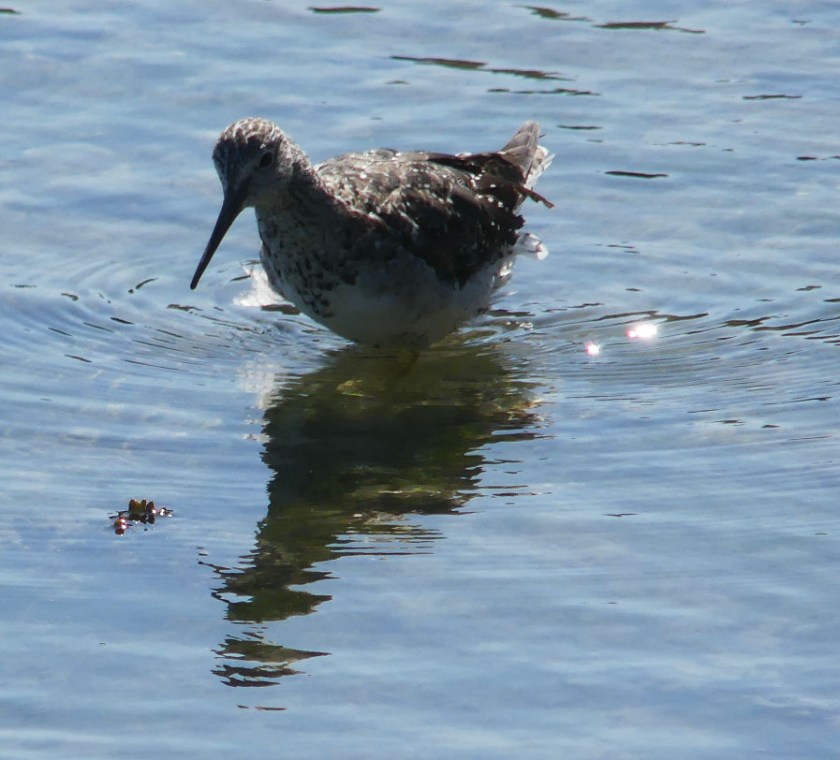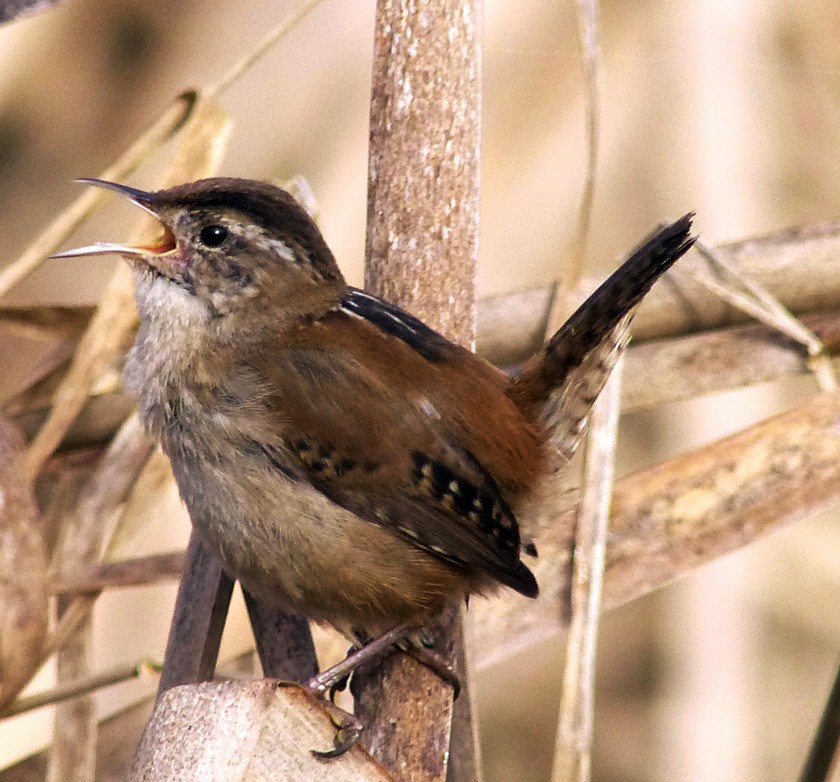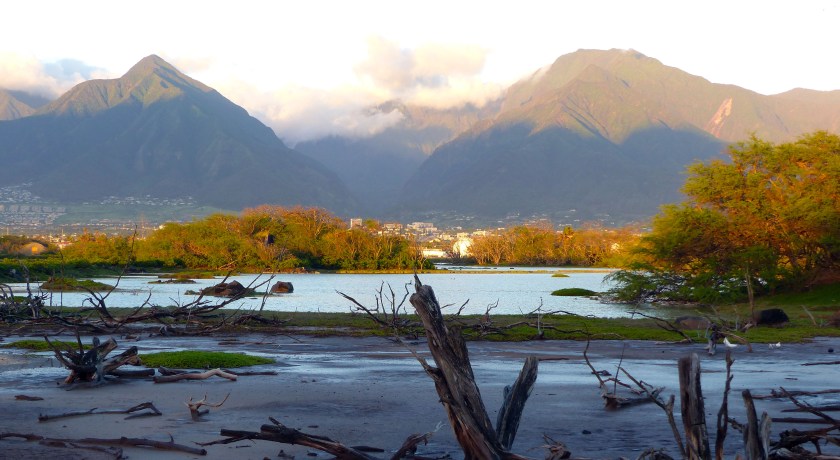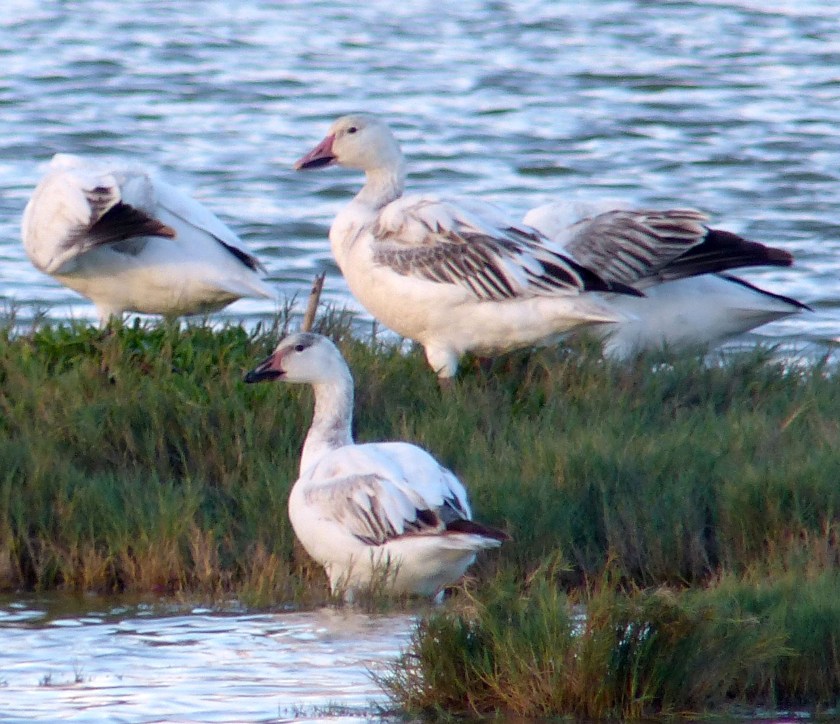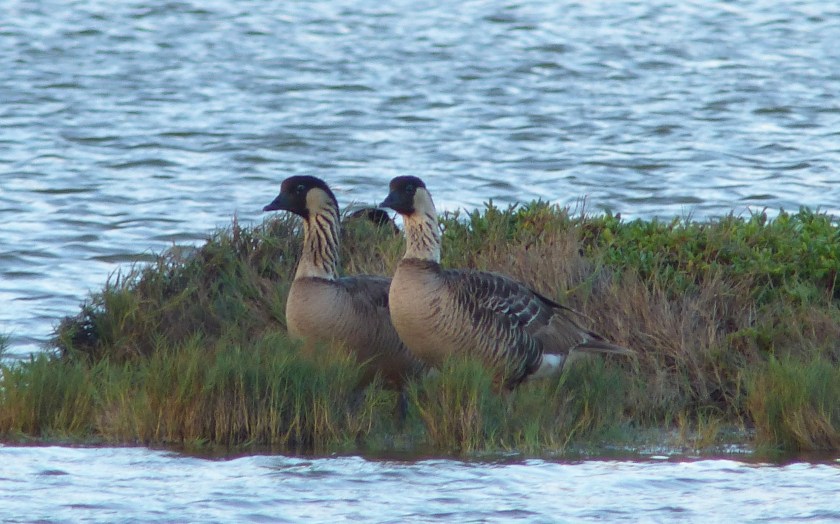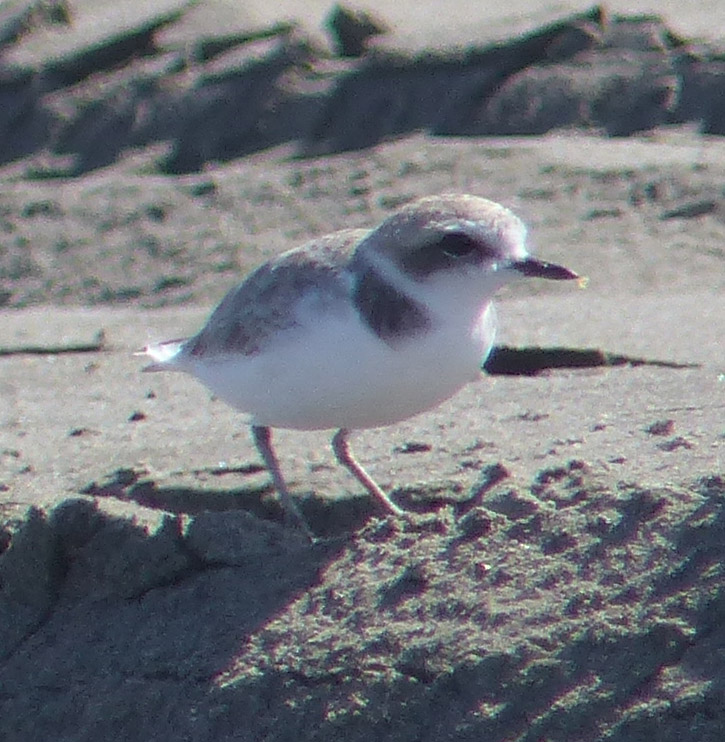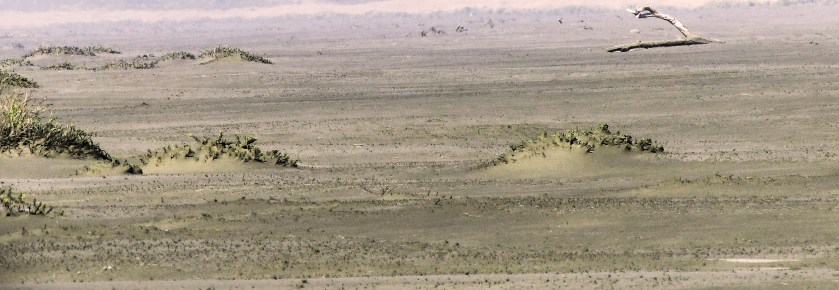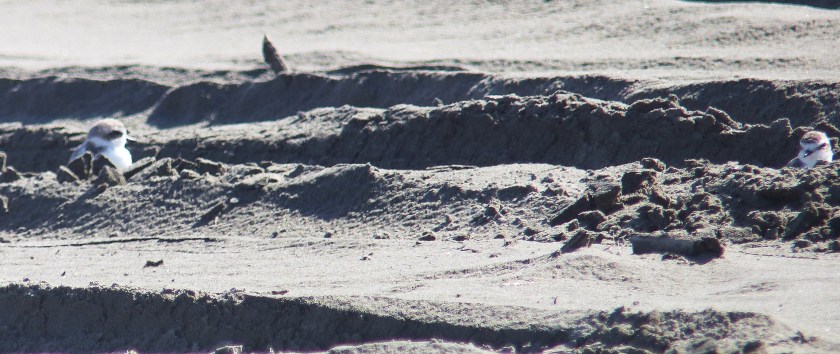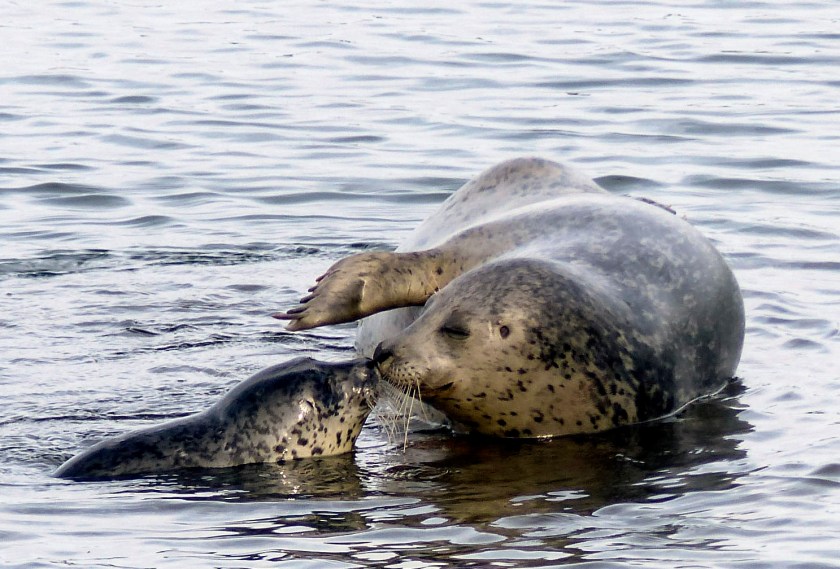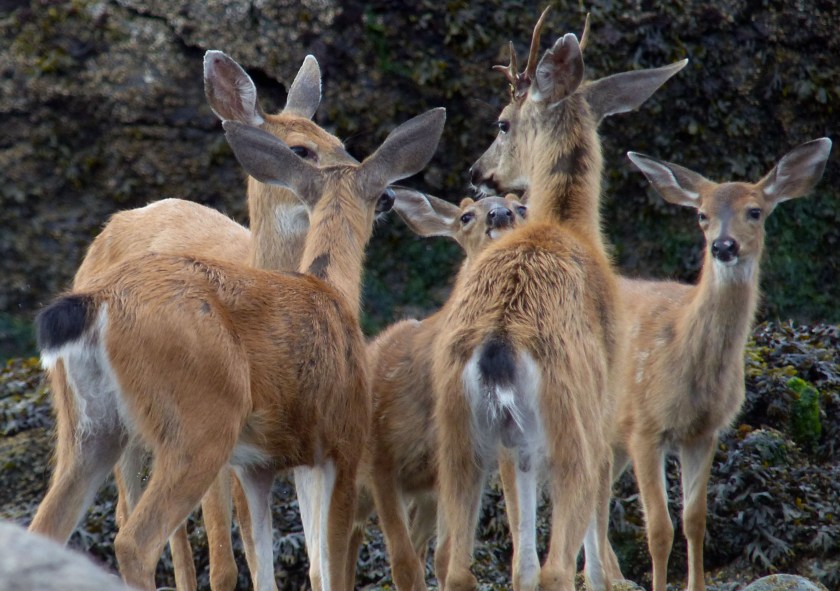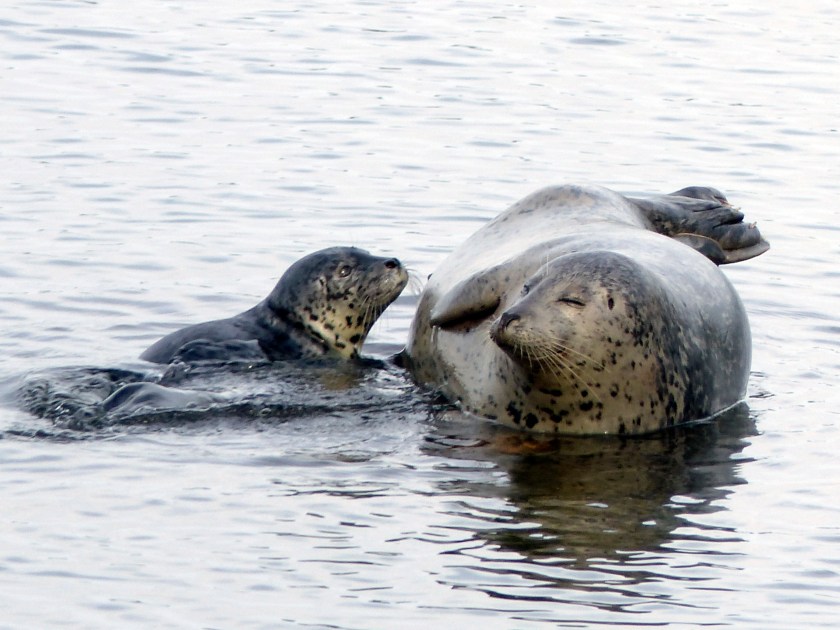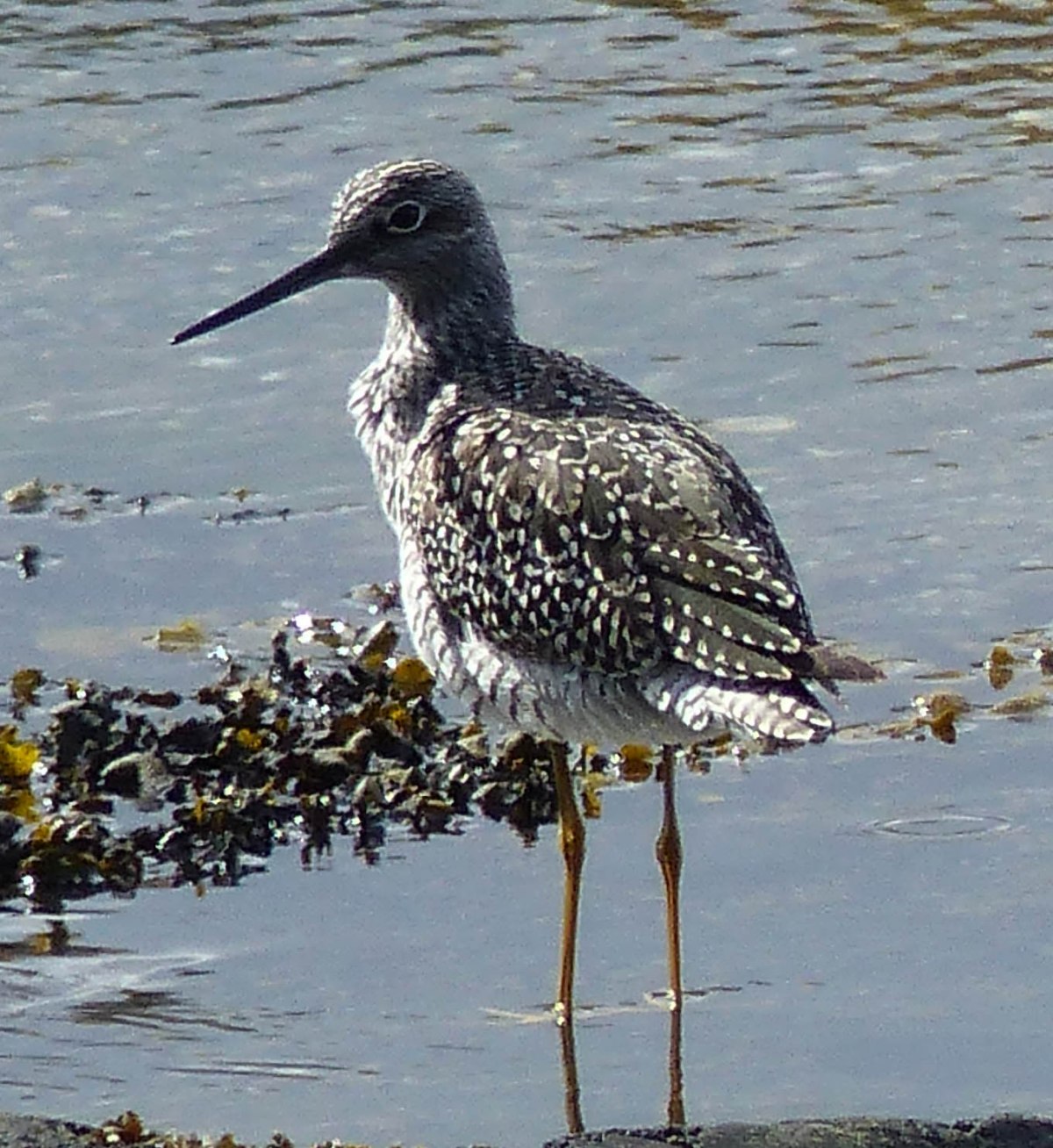
American Avocets and Coots
Burrowing Owls – I can’t seem to get these little guys. By ‘get’, I mean ‘add to my list’, not as in ‘I don’t understand them’. Although I don’t. Anyway, I’m determined on this trip — steely-eyed. The owls are ‘reliable’ in the intensely agricultural Imperial Valley south of the Salton Sea. It’s a curiosity, the Salton Sea. An accident. Sort of. Being below sea level the Salton is a sink soaking up seasonal runoff. Boy, that’s a lot of ‘s’s!
In centuries past, runoff created a lake, which the sun quickly evaporated away. Then about 1905 or so, a water company goof let the Colorado River fill the basin and suddenly the folks in Palm springs and LA had a big beautiful lake to visit. Great! Resort communities sprang up; probably Bogie and Bacall spent time here. In the a 1950’s it was a Beach Blanket Bingo kind of a place. That was then. Nowadays, almost no new water comes in and the lake is shrinking under the hot desert sun. Did I mention the smell? It has an unusual bouquet and when the wind’s in the wrong quarter, it’s fierce. If nothing changes, all the fish will die within seven years — even the hardy African Tilapia. Birds will suffer too as water levels drop. Where will the migrating flocks go to replenish their energy when the Sea is gone? Who knows?
The change is happening now. Three years ago squadrons of White Pelicans cruised the Sea; today not a single bird. Maybe there just aren’t enough fish anymore. Maybe the Pelis are at the other end of the lake. Lots of birds still come – they have to – but fewer and fewer every year they say.
But I need to lighten up. It’s not all doomsday. There are folks trying to get more water for the Sea. The birding’s still good. American Avocets, which don’t need the Tilapia, still work the retreating edge of the water picking up brine shrimp. They are tall, pretty shorebirds with their French lawyer robe colouring and upturned bills. I can vouch for the upturned bill, not the other.

Waterfowl in Transit
The Sonny Bono Wildlife Refuge has Burrowing Owls — or they’re close by at any rate. Just inside the Refuge, a Roadrunner ambles by and then darts off looking, I suppose, for a snake or lizard for breakfast. Some Gambel’s Quail chuckle their way through the undergrowth. On some ponds, huge numbers of waterfowl rest on their way north; on others amazing numbers of shorebirds, including dozens of Dowitchers.

Roadrunner
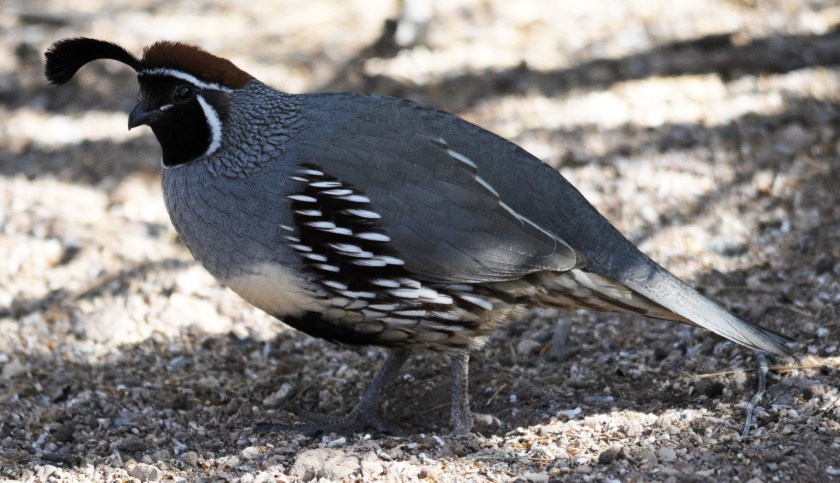
Gambel’s Quail

Dowitchers
I stop at the Refuge office for tips and also to ask about Sonny. Politicians tack their names on projects in which they otherwise have little interest but Sonny, once mayor of Palm Springs, really cared. So, thanks Sonny, (though not necessarily for “I Got You Babe)! As for the owls – “just walk out to the end of the parking lot and look right.” Which I do. In the wild, they’d use the abandoned burrows of other animals as they don’t dig their own. Here people have installed nesting pipes. And there they are, right on their doorstep, taking in the morning sun. So easy. How come it took me so long to get ’em’?
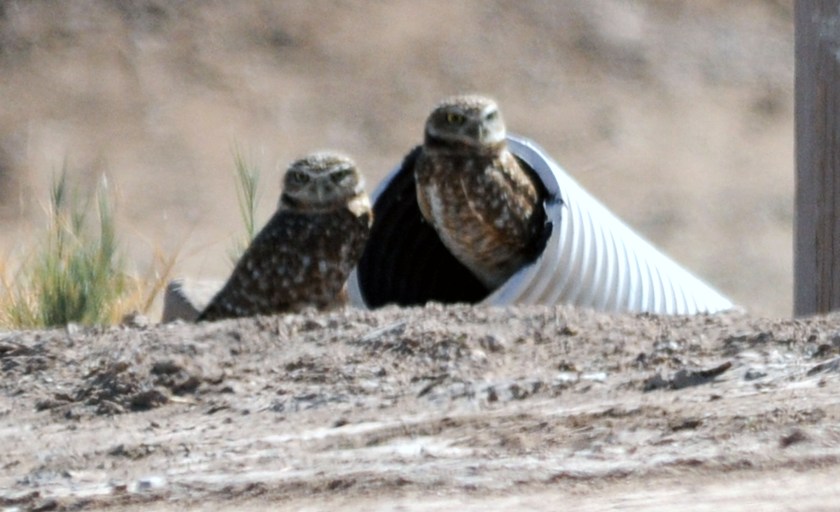

Burrowing Owls


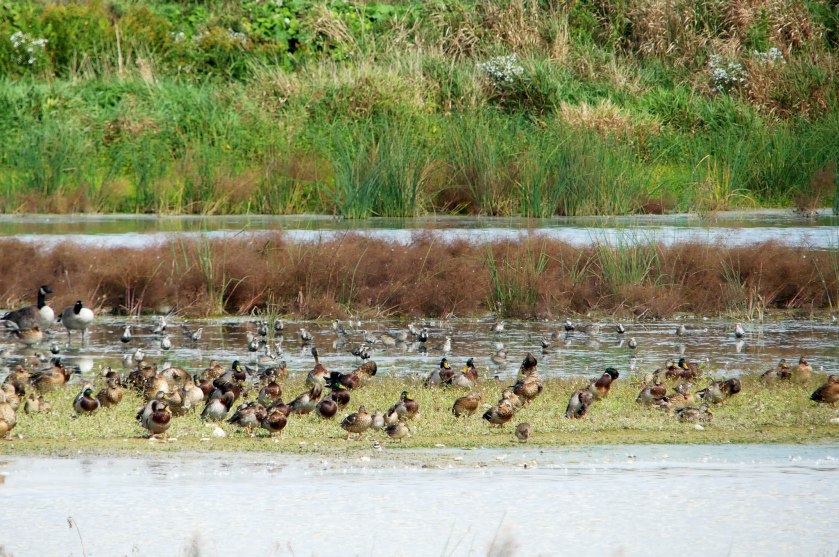

 Pectoral Sandpipers
Pectoral Sandpipers



